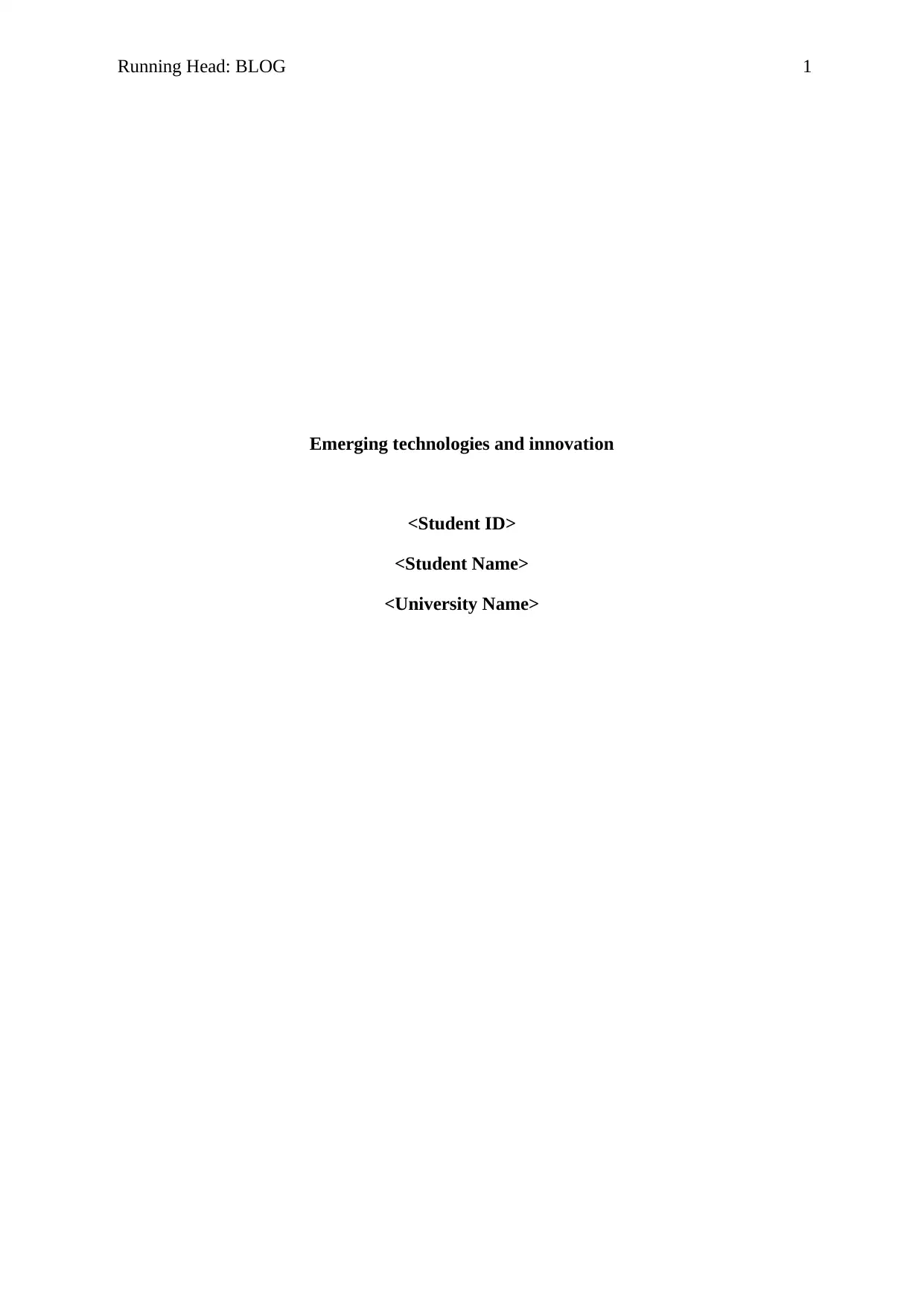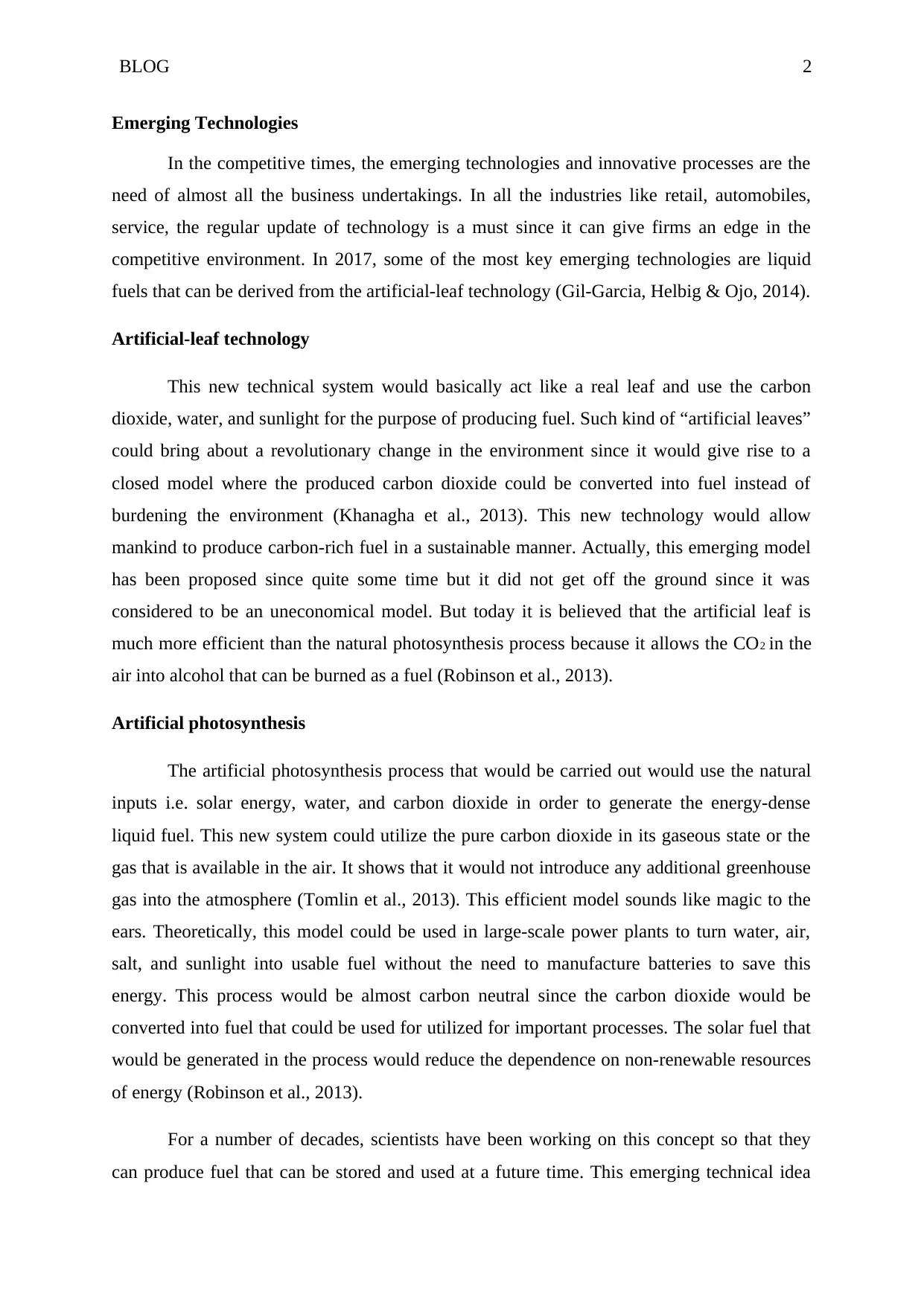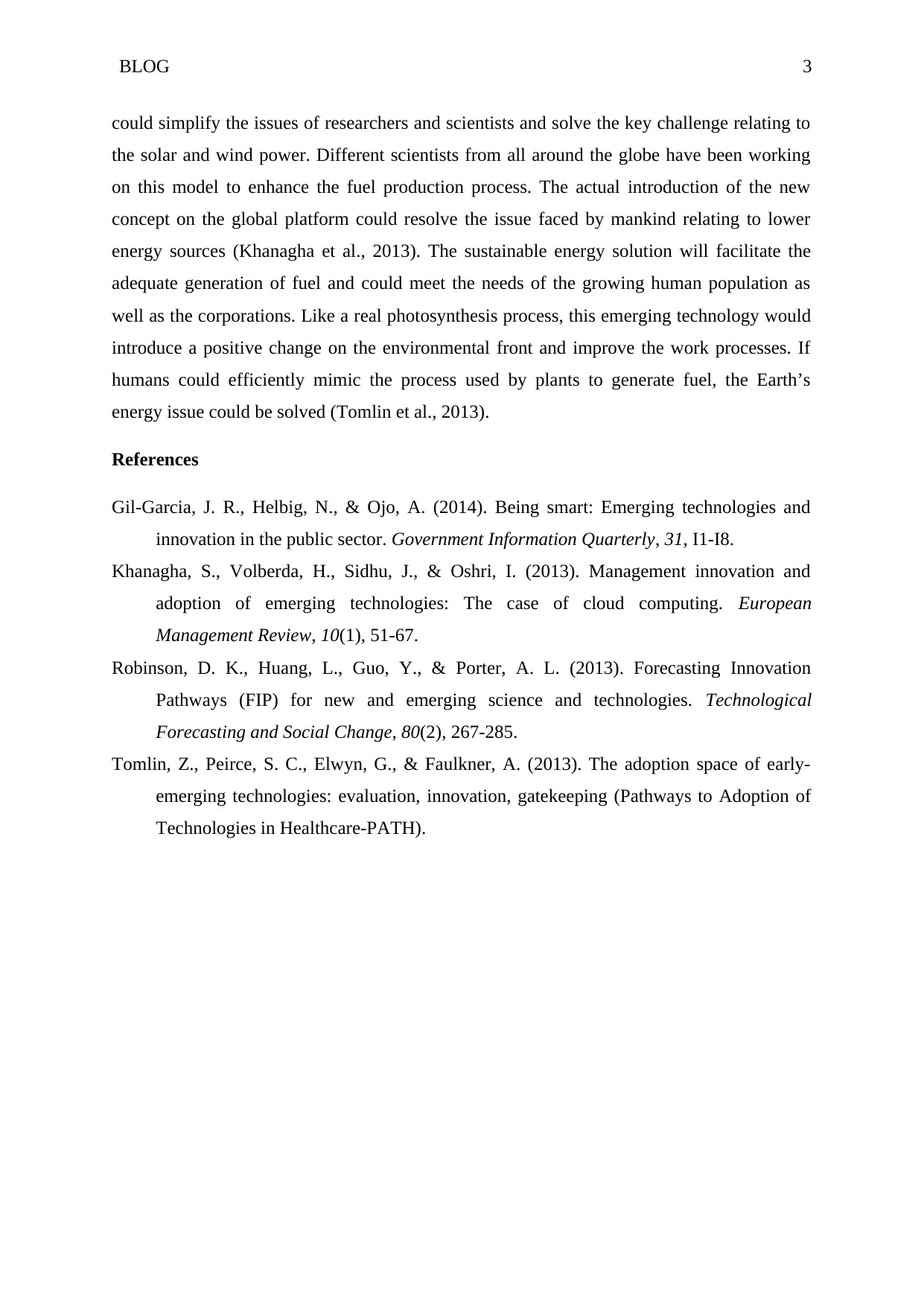Emerging Technologies and Innovation in Business: Artificial Leaf Tech
VerifiedAdded on 2020/03/16
|3
|818
|93
Essay
AI Summary
This essay delves into the realm of emerging technologies, specifically focusing on artificial leaf technology and artificial photosynthesis. It highlights the potential of these innovations to revolutionize various industries by providing sustainable energy solutions. The essay explains how artificial leaves mimic the natural process of photosynthesis, utilizing carbon dioxide, water, and sunlight to produce fuel, thereby offering a closed-loop system that converts carbon dioxide into usable fuel. It also discusses the artificial photosynthesis process, which generates energy-dense liquid fuel from solar energy, water, and carbon dioxide, potentially leading to carbon-neutral power plants. The document emphasizes the importance of these technologies in reducing reliance on non-renewable resources and addressing the growing energy demands of the global population. References to relevant research papers and studies are also included, providing a comprehensive overview of the subject matter.
1 out of 3










![[object Object]](/_next/static/media/star-bottom.7253800d.svg)